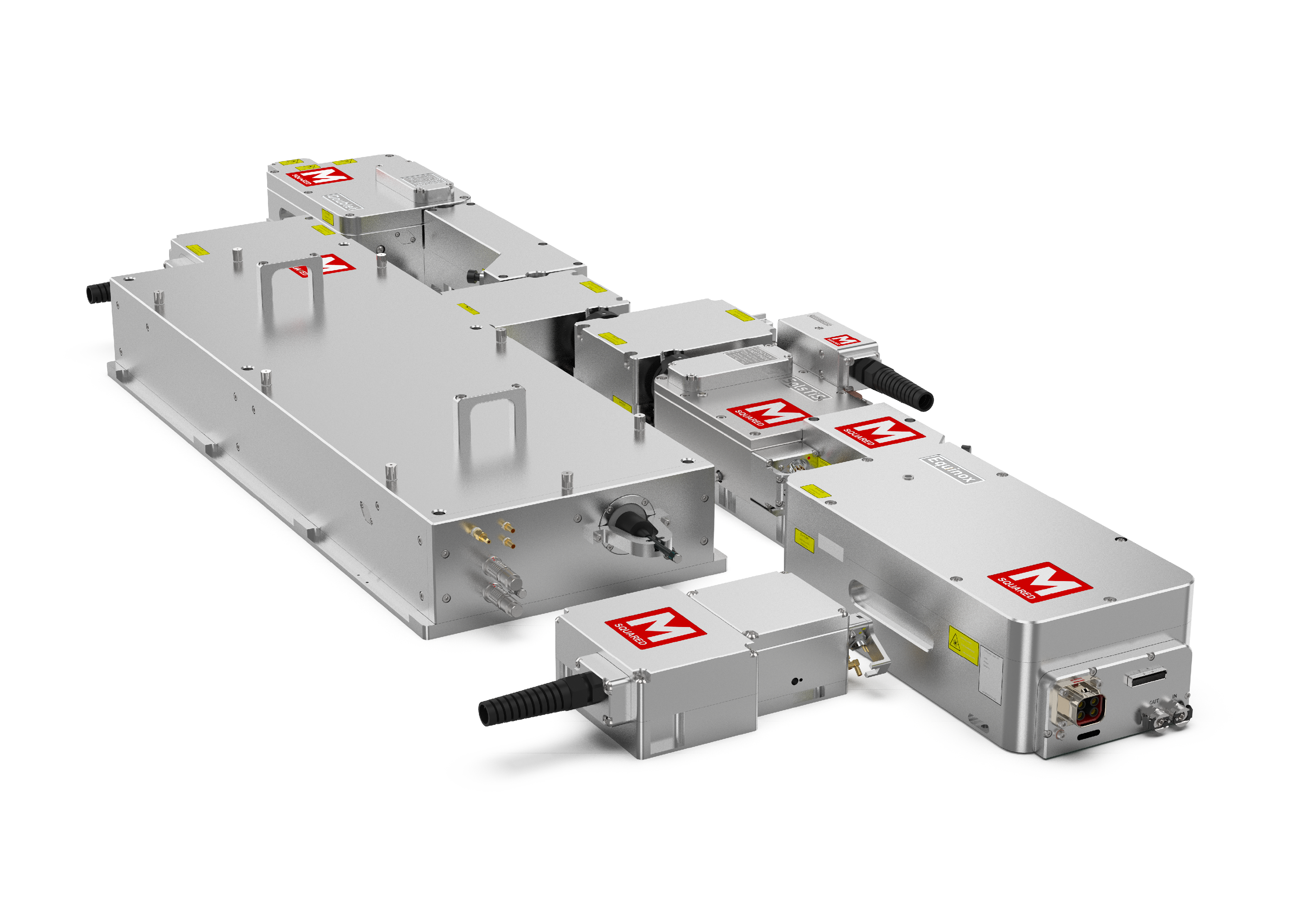

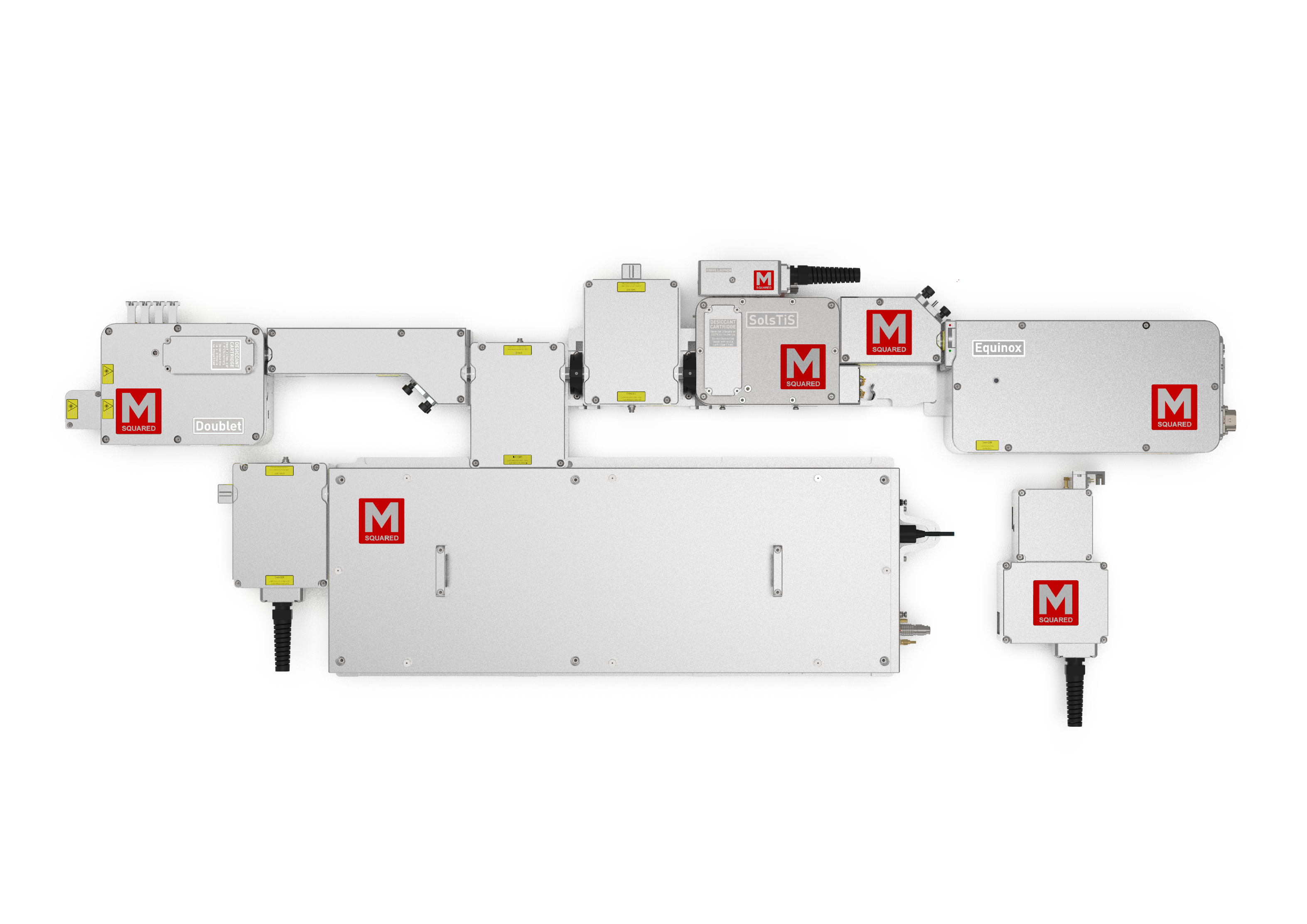
SolsTiS Rainbow brings together M Squared’s award-winning laser technologies into a single, easy-to-use platform providing hands-free automated access to light of any colour in the visible, near-ultraviolet and near-infrared wavebands. The advanced SolsTiS Rainbow features a fully-automated self-aligning, sealed, high-efficiency SolsTiS, a SolsTiS Doublet SHG cavity and a frequency mixing module, all capable of rapid and precise narrow-linewidth wavelength tuning in the range from 350 – 1100 nm. Furthermore, SolsTiS Rainbow is capable of user-defined high-speed, high-resolution stepped and continuous scanning over extended tuning ranges.
SolsTiS Rainbow is the only automated self-optimising laser system of its kind offering broad tunability across the visible, near-ultraviolet and near-infrared regions. Operation in each waveband, including wavelength selection, scanning and power optimisation, is entirely hands-free.
Broadest wavelength tuning available (350 – 1100 nm) from a single platform, incorporating continuous tuning from 350 – 700 nm and 700 – 1100 nm, making it ideal for a range of diverse applications in spectroscopy, spectral calibration, quantum and microscopy.
High-speed, high-resolution stepped and continuous scanning is available over extended tuning ranges with M Squared’s Dial-A-Wavelength and Terascan functionality as standard. Field proven in demanding space instrument calibration campaigns.
Ultra-narrow linewidth <200 kHz at 100 µs with a large coherence length (km). The SolsTiS Rainbow also has low amplitude and frequency noise at <0.1 % rms.
SolsTiS Rainbow features sealed cavities with easily replaceable desiccant module to ensure sustained performance over extended periods.
Highly efficient, self-aligning frequency mixing and resonant doubling of CW input light delivers >2 W peak at select VIS and UV wavelengths as well as >5 W peak at NIR wavelengths.
System footprint is well-suited to most optical tables and allows for easy integration. Sealed cavities enable gas purging and contaminant-free operation ensuring long crystal lifetimes. The Invar baseplate provides maximum optomechanical stability to normal environmental changes.
Easy-to-use remote operation is via a web-based control interface, which offers simple integration with third-party tools, such as LabVIEW.
| Model | Tuning range |
|---|---|
|
SolsTiS Rainbow 100 SolsTiS Rainbow 200 SolsTiS Rainbow 300 |
100 nm tuning in UV / VIS 200 nm tuning in UV / VIS 300 nm tuning in UV / VIS |
| Standard | Extended* | Linewidth | |
|---|---|---|---|
|
Output 1 Output 2 Output 3 |
350 nm – 500 nm 515 nm – 660 nm 700 nm – 1000 nm |
350 nm – 515 nm 515 nm – 700 nm 700 nm – 1100 nm |
<200 kHz at 100 μs <100 kHz at 100 μs <100 kHz at 100 μs |
| Standard | Extended* | Relative intensity noise | |
|---|---|---|---|
|
Output 1 Output 2 Output 3 |
350 nm – 500 nm 515 nm – 660 nm 700 nm – 1000 nm |
350 nm – 515 nm 515 nm – 700 nm 700 nm – 1100 nm |
<0.1 % rms,10 Hz – 10 MHz <0.2 % rms, 10 Hz – 10 MHz <0.075 % rms, 10 Hz – 10 MHz |
| Standard | Extended* | Frequency stability | |
|---|---|---|---|
|
Output 1 Output 2 Output 3 |
350 nm – 500 nm 515 nm – 660 nm 700 nm – 1000 nm |
350 nm – 515 nm 515 nm – 700 nm 700 nm – 1100 nm |
<200 MHz / °C &l100 MHz / °C <100 MHz / °C |
| Tuning range | Average power |
|---|---|
|
350 nm - 380 nm 381 nm - 420 nm 421 nm - 460 nm 461 nm – 500 nm 501 nm – 515 nm* 516 nm - 550 nm 551 nm - 580 nm 581 nm - 620 nm 621 nm - 660 nm 661 nm – 700 nm* 700 nm - 800 nm 801 nm - 900 nm 901 nm - 1000 nm 1001 nm - 1050 nm 1051 nm – 1100 nm |
>0.8 W >1.5 W >1.0 W >0.4 W >175 mW >0.4 W >0.5 W >0.4 W >0.2 W tbc >4.6 W >4.3 W >2.6 W >1.3 W >0.7 W |
| Standard | Extended* | Scan range | |
|---|---|---|---|
|
Output 1 Output 2 Output 3 |
350 nm – 500 nm 515 nm – 660 nm 700 nm – 1000 nm |
350 nm – 515 nm 515 nm – 700 nm 700 nm – 1100 nm |
Up to 40 GHz Up to 25 GHz Up to 25 GHz |
| Standard | Extended* | Beam quality | |
|---|---|---|---|
|
Output 1 Output 2 Output 3 |
350 nm – 500 nm 515 nm – 660 nm 700 nm – 1000 nm |
350 nm – 515 nm 515 nm – 700 nm 700 nm – 1100 nm |
<1.2 tbc <1.1 |
| Standard | Extended* | Beam circularity | |
|---|---|---|---|
|
Output 1 Output 2 Output 3 |
350 nm – 500 nm 515 nm – 660 nm 700 nm – 1000 nm |
350 nm – 515 nm 515 nm – 700 nm 700 nm – 1100 nm |
1.0 ± 0.1 tbc tbc |
| Standard | Extended* | Beam waist diameter | |
|---|---|---|---|
|
Output 1 Output 2 Output 3 |
350 nm – 500 nm 515 nm – 660 nm 700 nm – 1000 nm |
350 nm – 515 nm 515 nm – 700 nm 700 nm – 1100 nm |
0.6 ± 0.1 mm tbc 0.8 ± 0.1 mm |
| Standard | Extended* | Beam divergence | |
|---|---|---|---|
|
Output 1 Output 2 Output 3 |
350 nm – 500 nm 515 nm – 660 nm 700 nm – 1000 nm |
350 nm – 515 nm 515 nm – 700 nm 700 nm – 1100 nm |
<1.1 mrad tbc <3.0 mrad |
| Standard | Extended* | Polarization direction | |
|---|---|---|---|
|
Output 1 Output 2 Output 3 |
350 nm – 500 nm 515 nm – 660 nm 700 nm – 1000 nm |
350 nm – 515 nm 515 nm – 700 nm 700 nm – 1100 nm |
Vertical ± 3 degrees Horizontal ± 3 degrees Vertical ± 3 degrees |
| Standard | Extended* | Beam pointing | |
|---|---|---|---|
|
Output 1 Output 2 Output 3 |
350 nm – 500 nm 515 nm – 660 nm 700 nm – 1000 nm |
350 nm – 515 nm 515 nm – 700 nm 700 nm – 1100 nm |
<25 μrad / nm tbc <3 μrad / nm |
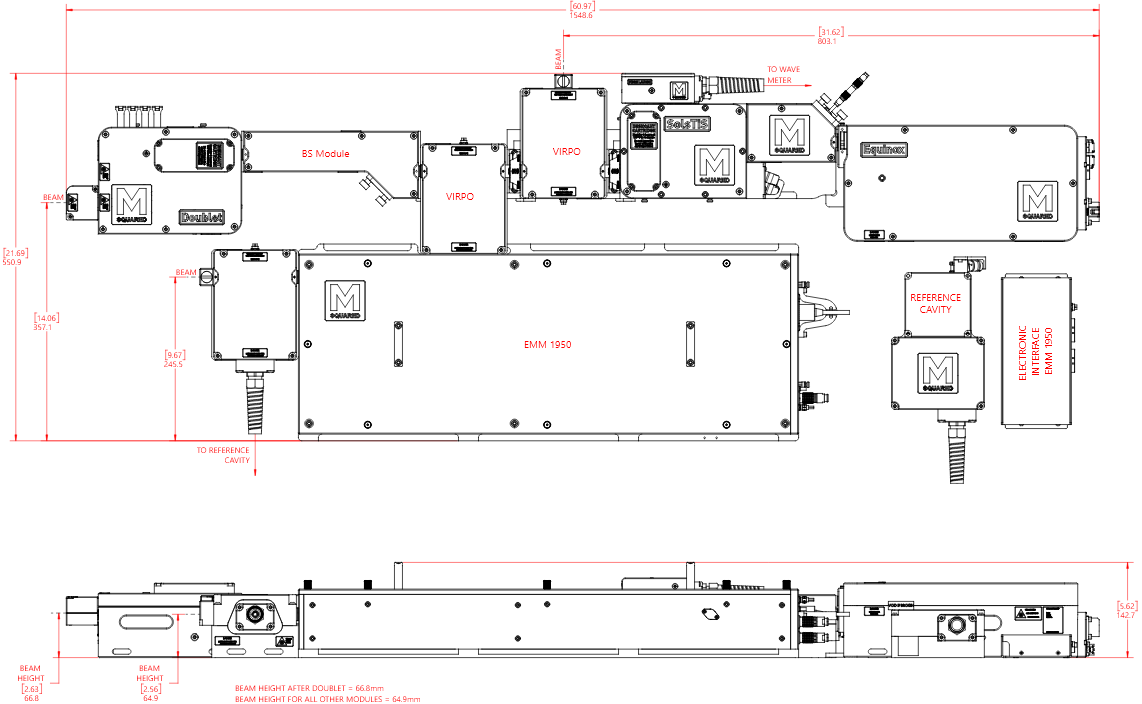
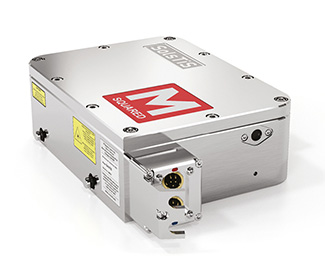
The award-winning SolsTiS is a step-change in continuous-wave Ti:Sapphire laser technology - compact, ultra-narrow linewidth, fully automated and widely tunable.
VIEW PRODUCT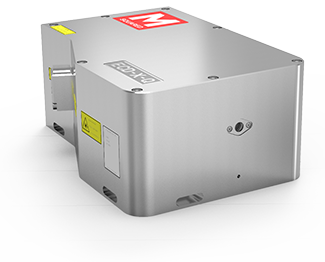
This SolsTiS extension adds a frequency quadrupling feature to SolsTiS, producing a narrow linewidth, tunable output in the ultraviolet wavelengths.
VIEW PRODUCT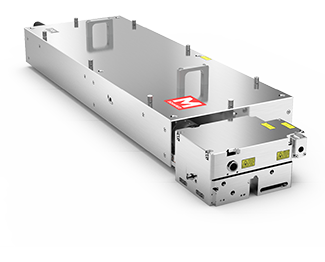
The SolsTiS External Mixing Module provides fully automated tuning in the visible (500-680 nm) and IR (1.1-4.5 µm) with further extension options into the UV (250-350 nm).
VIEW PRODUCT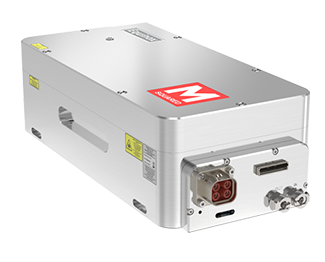
Equinox is a single frequency CW 532 nm laser (up to 18W). It’s inherently stable, low noise, narrow linewidth and naturally compact, robust and fully-automated.
VIEW PRODUCTOr if you’d prefer to speak to someone in person, please phone +44 (0)1483 685 170
Phone +44 (0)141 945 0500
Head Office
Phone +1-617-401-2368
USA
Phone +44 (0)1483 685170
M Squared Life